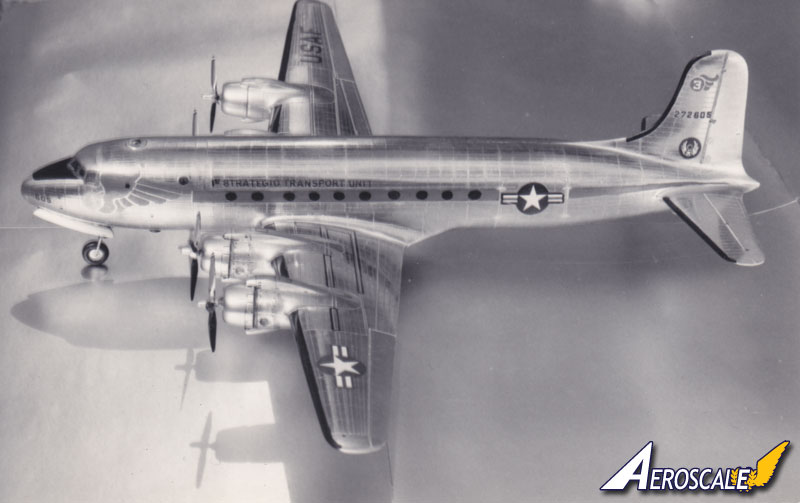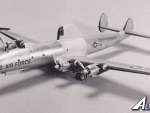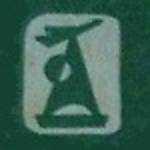RAREplanes - The Big Vacform Revolution Started Here
17
Comments
Quite a lot of curious nerds and enthusiasts came to my door to see ‘the works’ in action, but they
were somewhat nonplussed when I introduced them to the dining room table where I worked on the
new master moulds and drew plans and construction drawings (for the first year we ate our meals in
the kitchen). American fans just off the plane at Gatwick Airport took the four- mile taxi ride to the
Earlswood house, hippies hitchhiked and even Dutch, Norwegian, Swedish and Scottish modellers
came calling. Amongst the many customers were people as diverse as High Court judges, nuclear
submarine commanders, airline pilots, museum curators and a stripclub operator who wrote his
orders on the back of the girls 10 x 8 publicity pics. My delivery postman was so fascinated with this
exotic mail that he went into the plastic model retail business and eventually became one of Britains
biggest kit distributors.
And so it was in May 1970, 11 months after I started, that I got my first copyist, one of my early mail- order customers in Canada who seems to have used a strange device, a Mattel Vac-U-Form, which was really only a tiny toy for young kiddies to play with and virtually unknown in the UK because of electrical regulations. I was just in the throes of obtaining a patent on my idea but, whilst it would have been possible for this country, it was enormously costly to cover the whole world so, as I had little idea of the eventual success of vacforms, it was not pursued further. I reckoned the smartest thing to do was to keep ahead of any opposition that should appear by creating a well-respected brand. Up to this point, I believed I was the only one in the game and thought I had a job for life. Oh how little I knew!
My factory-owning friend airily suggested I stop using male moulds and that a ‘female’ type should be tried which would have indentations instead of bumps. By scribing rivet and panel detail onto the master this would be transferred, via the mould surface, to the formed plastic sheet. And it worked! The master pattern was arrived at by carving softwood to a desired shape according to a scaled plan; the fuselage, wing, etc was then split along the centreline and a sheet of hot styrene formed overall. The crude shapes were cut from the sheet, sanded flat and cemented together so making a complete component that could be filed, sanded and smoothed to an exact shape; fine detailing such as rivets and panel lines were added with sharp blades and needles. So the next kits of the Polikarpov l-153 and the Curtiss CW-21 had some rough external markings, but the scheduled Northrop A-17 had to be held back until I had become more adept at this tricky detailing which caused the new moulds to take three times as long to complete.
Things were going well - orders flowing, numbers rising constantly with customers approving and/or encouraging. Even the model press was tickled pink with something new to fill their columns and, to this end I kept up a stream of good professional photographs of each model which cost a lot but very well worth it - the pictures were invariably shown, so I had no need to advertise. Decent modeling pictures were scarce in those days and Editors would sit up and beg for them ( I hadn’t spent half my life in publicity for nothing so I knew how to work the press). In September 1970, Chris Ellis published a useful volume on Advanced Modelling’ that featured the article on my Metalskin model covering material and another on how to construct a RAREpIane vacform, a massive boost, but it was several years before vacuum-forms were included in a book again. That was a nice little picturebook by Hugh Markham covering kits by a half-dozen sources such as Contrail, Airmodel, Airframe and RAREplanes; by that time my Vulcan bomber picture was included. Six years later, in 1984, the talented Richard Staszak produced his wonderfully illustrated publication on building and improving vacform aircraft for the American Kalmbach company, which featured the RAREpIane Fi-1 Fury and A2D Skyshark. It will never be bettered.
RAREplanes first full year 1970, was beginning to look a great success, so much so that I could not handle all aspects, especially the hundreds of mailings to individual customers and that was when an American mail-order house contacted me with an attractive proposition - massive orders, total US distribution and sole selling rights. This arrangement would give me much more time to originate or improve my products, so I sold my soul. After the first bulk deliveries went by ship to Detroit, we received a demand that all future kits must go to the USA before the rest of the world, then it was insisted that the US company logo should be shown large on the pack, and then they demanded to dictate which aircraft should be made into kits and, finally, a price restructuring. I started to argue - and the payments dried up and stopped. Things did not look so rosy. Starved of American customers and money I panicked and mailed every model dealer I could contact in the USA, which resulted in more than a score of shops who unfailingly kept me afloat for the next 20 years. They were all great characters and fondly remembered. As for the unpaid quantities of kits, I had actually insured them and, as non-payment could be proved, there was a claim for reasonable reparation. We could begin to live again.
It was around Christmastime 1970 that I was invited to a big kick-off party for Alan Hall’s ‘Aviation News’ magazine and took a resin mould of the biplane Hawker Fury to show him. This was to be my twelfth kit and it attracted the excited attention of a foreign gentleman whom I learnt later was the owner of Airmodel, a manufacturer of small injected conversion bits such as radar bumps, blisters, pods, aerials and gun arrays. It seems Franz hotfooted it to Germany the next day and immediately produced his first vacform of pvc cockpit canopies which were advertised in the Airfix Magazine for January 1971; a clear pvc fuselage conversion for an Anson 19 following two months later. Shortly afterwards Airmodel was producing complete kits at the rate of a dozen a month (but crudely). It didn’t dent RAREplane sales all that much but slowed the meteoric rise. Some small producers such as HDH, Airframe, Modakit and TWR, suddenly found there was fame and cash to be made and the revolution started to grow, with Sutcliffe [Contrail joining with his ‘heavy conversion unit’ bits to modify 4-engine Airfix bombers to transport versions in August 1971.
Of the new batch of manufacturers, the standard seemed to be somewhat poor, and I began to be worried about the possible damage these sloppy producers might be doing to my healthy vacform market as the feedbacks about them coming through IPMS members was extremely critical to my ears. I did not want to be lumped with losers and decided a best course was to offer professional quality forming, accurate shapes, use good materials, clear instructions,diagrams and drawings; in short, to give value to the customer because it was an expensive product that had to shout ‘Make Me’ on sight.
From the start, people wondered why vacform ‘kits’ contained no separate propeller, undercarriage legs, pilots, engines and decals. I tried to include some items on the vacform sheet which, at a pinch, were useable. The philosophy was that costs must be kept to a minimum and that the class of buyer would probably have some spare bits left over from injection kits or would cannibalise older models to complete a unique exhibit. My range of models were chosen to please the maximum number of modellers in several different countries and the Vindicator, for instance, could be decorated in half-a dozen colour schemes. I believed it would not be hard for the modeller to find a few stars or roundels in the spares box, especially as the decal market had just begun to expand with companies like ABT, Microscale, Stoppel and Modeldecal. Later on an ex-RAF fitter John Adams asked if he could make metal props and engines for sale, specifically for RAREplanes, and so his prolific Aeroclub company prospered and flourished for the next 30 years.
The large plastic model kit manufacturers in Britain and America were sluggish in bringing out new items and modellers desperately wanted more, so the vacform was embraced as a very reasonable substitute to a point where, at the budding small model shows almost 10% of the finished models were vacuum-formed and it was heartening to see 50 or so expertly made and painted on the tables - and winning several competitions, such as the superb seablue Douglas A2D Skyshark with rotating contraprops, folding wings and tiny flashing navigation lights. I was so pleased to learn the US IPMS Nationals held 1978 were won by a fantastic cut-away RAREplane Lockheed EC-121H Constellation showing all the internals and fully-equipped radar stations in miniature; the following year the same gifted modeller won the top prize for a hangar diorama featuring my Douglas C-54 Skymaster kit in a state of maintenance. Then, the display department of the Pentagon sent photos and wrote saying models of my Boeing KC-97, C-54 and Connie were chosen to augment their house collection. And many more photos and letters arrived from all over the world proving that the modellers appreciated what RAREplanes was doing for them. What did give the occasional thrill were the colour covers of model magazines featuring the bigger RAREplane models, two on the American ‘Scale Modeler’, two on ‘Fine Scale Modeler’ and two on the British ‘Scale Models’ and lots of colour work on the inside pages. Not bad PR for a small company; the name was getting known.
Continued in Part 2
With thanks to Jim Lund for his kind permission to use his photos of many of the models shown.
And so it was in May 1970, 11 months after I started, that I got my first copyist, one of my early mail- order customers in Canada who seems to have used a strange device, a Mattel Vac-U-Form, which was really only a tiny toy for young kiddies to play with and virtually unknown in the UK because of electrical regulations. I was just in the throes of obtaining a patent on my idea but, whilst it would have been possible for this country, it was enormously costly to cover the whole world so, as I had little idea of the eventual success of vacforms, it was not pursued further. I reckoned the smartest thing to do was to keep ahead of any opposition that should appear by creating a well-respected brand. Up to this point, I believed I was the only one in the game and thought I had a job for life. Oh how little I knew!
My factory-owning friend airily suggested I stop using male moulds and that a ‘female’ type should be tried which would have indentations instead of bumps. By scribing rivet and panel detail onto the master this would be transferred, via the mould surface, to the formed plastic sheet. And it worked! The master pattern was arrived at by carving softwood to a desired shape according to a scaled plan; the fuselage, wing, etc was then split along the centreline and a sheet of hot styrene formed overall. The crude shapes were cut from the sheet, sanded flat and cemented together so making a complete component that could be filed, sanded and smoothed to an exact shape; fine detailing such as rivets and panel lines were added with sharp blades and needles. So the next kits of the Polikarpov l-153 and the Curtiss CW-21 had some rough external markings, but the scheduled Northrop A-17 had to be held back until I had become more adept at this tricky detailing which caused the new moulds to take three times as long to complete.
Things were going well - orders flowing, numbers rising constantly with customers approving and/or encouraging. Even the model press was tickled pink with something new to fill their columns and, to this end I kept up a stream of good professional photographs of each model which cost a lot but very well worth it - the pictures were invariably shown, so I had no need to advertise. Decent modeling pictures were scarce in those days and Editors would sit up and beg for them ( I hadn’t spent half my life in publicity for nothing so I knew how to work the press). In September 1970, Chris Ellis published a useful volume on Advanced Modelling’ that featured the article on my Metalskin model covering material and another on how to construct a RAREpIane vacform, a massive boost, but it was several years before vacuum-forms were included in a book again. That was a nice little picturebook by Hugh Markham covering kits by a half-dozen sources such as Contrail, Airmodel, Airframe and RAREplanes; by that time my Vulcan bomber picture was included. Six years later, in 1984, the talented Richard Staszak produced his wonderfully illustrated publication on building and improving vacform aircraft for the American Kalmbach company, which featured the RAREpIane Fi-1 Fury and A2D Skyshark. It will never be bettered.
RAREplanes first full year 1970, was beginning to look a great success, so much so that I could not handle all aspects, especially the hundreds of mailings to individual customers and that was when an American mail-order house contacted me with an attractive proposition - massive orders, total US distribution and sole selling rights. This arrangement would give me much more time to originate or improve my products, so I sold my soul. After the first bulk deliveries went by ship to Detroit, we received a demand that all future kits must go to the USA before the rest of the world, then it was insisted that the US company logo should be shown large on the pack, and then they demanded to dictate which aircraft should be made into kits and, finally, a price restructuring. I started to argue - and the payments dried up and stopped. Things did not look so rosy. Starved of American customers and money I panicked and mailed every model dealer I could contact in the USA, which resulted in more than a score of shops who unfailingly kept me afloat for the next 20 years. They were all great characters and fondly remembered. As for the unpaid quantities of kits, I had actually insured them and, as non-payment could be proved, there was a claim for reasonable reparation. We could begin to live again.
It was around Christmastime 1970 that I was invited to a big kick-off party for Alan Hall’s ‘Aviation News’ magazine and took a resin mould of the biplane Hawker Fury to show him. This was to be my twelfth kit and it attracted the excited attention of a foreign gentleman whom I learnt later was the owner of Airmodel, a manufacturer of small injected conversion bits such as radar bumps, blisters, pods, aerials and gun arrays. It seems Franz hotfooted it to Germany the next day and immediately produced his first vacform of pvc cockpit canopies which were advertised in the Airfix Magazine for January 1971; a clear pvc fuselage conversion for an Anson 19 following two months later. Shortly afterwards Airmodel was producing complete kits at the rate of a dozen a month (but crudely). It didn’t dent RAREplane sales all that much but slowed the meteoric rise. Some small producers such as HDH, Airframe, Modakit and TWR, suddenly found there was fame and cash to be made and the revolution started to grow, with Sutcliffe [Contrail joining with his ‘heavy conversion unit’ bits to modify 4-engine Airfix bombers to transport versions in August 1971.
Of the new batch of manufacturers, the standard seemed to be somewhat poor, and I began to be worried about the possible damage these sloppy producers might be doing to my healthy vacform market as the feedbacks about them coming through IPMS members was extremely critical to my ears. I did not want to be lumped with losers and decided a best course was to offer professional quality forming, accurate shapes, use good materials, clear instructions,diagrams and drawings; in short, to give value to the customer because it was an expensive product that had to shout ‘Make Me’ on sight.
From the start, people wondered why vacform ‘kits’ contained no separate propeller, undercarriage legs, pilots, engines and decals. I tried to include some items on the vacform sheet which, at a pinch, were useable. The philosophy was that costs must be kept to a minimum and that the class of buyer would probably have some spare bits left over from injection kits or would cannibalise older models to complete a unique exhibit. My range of models were chosen to please the maximum number of modellers in several different countries and the Vindicator, for instance, could be decorated in half-a dozen colour schemes. I believed it would not be hard for the modeller to find a few stars or roundels in the spares box, especially as the decal market had just begun to expand with companies like ABT, Microscale, Stoppel and Modeldecal. Later on an ex-RAF fitter John Adams asked if he could make metal props and engines for sale, specifically for RAREplanes, and so his prolific Aeroclub company prospered and flourished for the next 30 years.
The large plastic model kit manufacturers in Britain and America were sluggish in bringing out new items and modellers desperately wanted more, so the vacform was embraced as a very reasonable substitute to a point where, at the budding small model shows almost 10% of the finished models were vacuum-formed and it was heartening to see 50 or so expertly made and painted on the tables - and winning several competitions, such as the superb seablue Douglas A2D Skyshark with rotating contraprops, folding wings and tiny flashing navigation lights. I was so pleased to learn the US IPMS Nationals held 1978 were won by a fantastic cut-away RAREplane Lockheed EC-121H Constellation showing all the internals and fully-equipped radar stations in miniature; the following year the same gifted modeller won the top prize for a hangar diorama featuring my Douglas C-54 Skymaster kit in a state of maintenance. Then, the display department of the Pentagon sent photos and wrote saying models of my Boeing KC-97, C-54 and Connie were chosen to augment their house collection. And many more photos and letters arrived from all over the world proving that the modellers appreciated what RAREplanes was doing for them. What did give the occasional thrill were the colour covers of model magazines featuring the bigger RAREplane models, two on the American ‘Scale Modeler’, two on ‘Fine Scale Modeler’ and two on the British ‘Scale Models’ and lots of colour work on the inside pages. Not bad PR for a small company; the name was getting known.
Continued in Part 2
With thanks to Jim Lund for his kind permission to use his photos of many of the models shown.
Comments
Mr. Stevens,
Thank you for telling us this story, and thank you for your models!
FEB 24, 2012 - 03:51 PM
I was probably the first latin-american modeler to see a vacuform kit, and has keep on modelling for almost 50 years, now after reading the history of RAREplanes, I can appreciatte even more the effort behind the name, Gordon Stevens was a turning point in my modeler´s life, and want to express my warmest consideration to him, he opened a wide door that nobody has been able to close; thanks Gordon and your family.
NOV 22, 2014 - 03:46 AM
nice first post, Armando.
I hope you will share some of your model building experience here.
Since that story was published, (look for part 2 as well!)
I have built several vacuform models, it is a medium I like alot now.
NOV 22, 2014 - 04:09 AM
Hi Armando
Welcome to Aeroscale - it's great to have you with us.
As you can imagine, it was a real privilege and pleasure to publish Gordon's story. His RAREplanes kits were instrumental in introducing me to the world beyond the bounds of mainstream modelling.
All the best
Rowan
NOV 22, 2014 - 09:49 PM
This is a fascinating article made even more poignant to me as I used to work for Berwicks model shop in Kettering and we stocked not only RAREplanes but also their self adhesive metal foil. John Adams was also a customer and he began to show us his Aeroclub range which we proceeded to sell. Mail order was the mainstay of Berwicks and with customers from NZ, Australia, USA, continental Europe and Wisbech (I always remember Mr Gamble) RAREplanes had worldwide distribution and I'm proud to have been part of that. Gordon Stevens, one of my modelling hero's
NOV 22, 2014 - 11:49 PM
Rowan,
thank you so much for posting the link to Gordon Stevens/RAREplanes part 1 story. It was really great read. I do remember seeing those Vac kits on the peg section in my then local Squadron Shop in Syosset, New York back in the early 70's, where I got my modeling Mojo once again, this time as an adult.
There is a link at the end of part 1 for part 2 which is also a must read.
Joel
NOV 23, 2014 - 07:13 PM
What strikes me most having re-read this splendid article is that Aeroscale contains such wealth of fantastic features and articles that in many case only gather virtual dust in forgotten corners of this site.
I really wonder what could be done to keep this treasure alive?
NOV 23, 2014 - 08:15 PM
I had to re-read this excellent article, having heard the sad news that Mr Stevens passed recently. RIP
NOV 02, 2015 - 05:09 AM
Copyright ©2021 by Gordon Stevens. Images also by copyright holder unless otherwise noted. The views and opinions expressed herein are solely the views and opinions of the authors and/or contributors to this Web site and do not necessarily represent the views and/or opinions of AeroScale, KitMaker Network, or Silver Star Enterrpises. Images also by copyright holder unless otherwise noted. Opinions expressed are those of the author(s) and not necessarily those of AeroScale. All rights reserved. Originally published on: 2012-02-18 00:00:00. Unique Reads: 41840
















